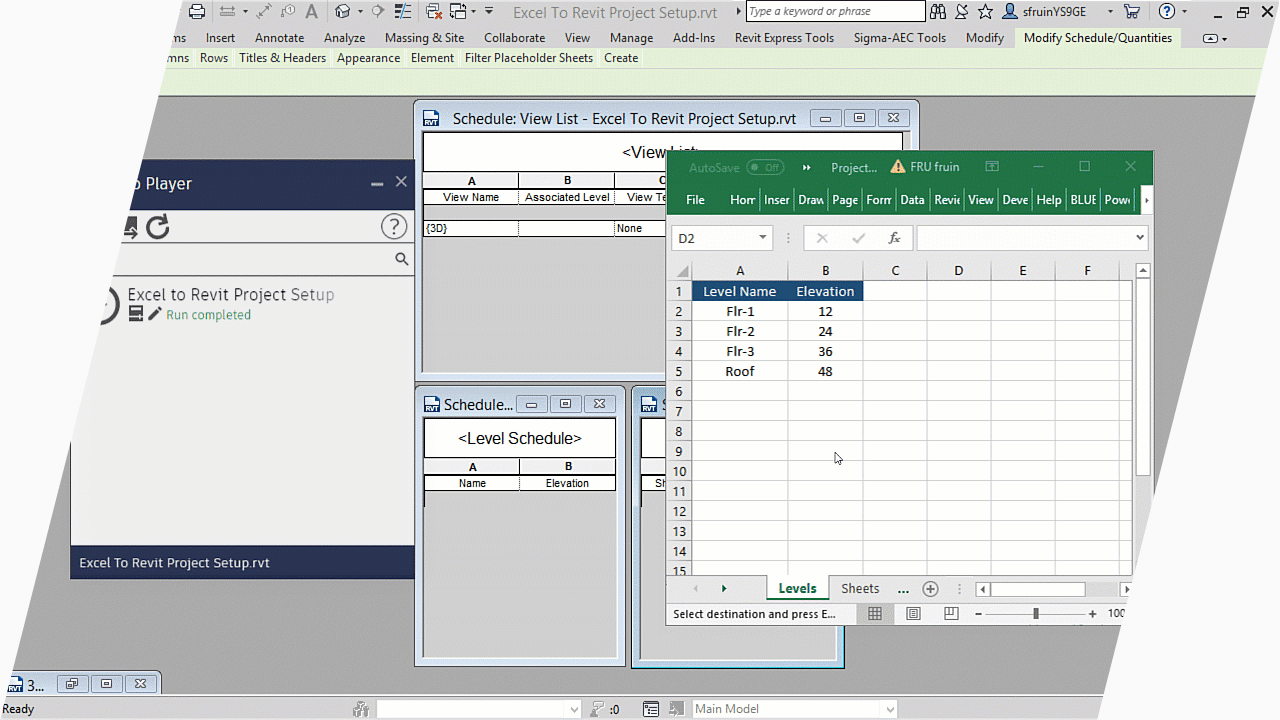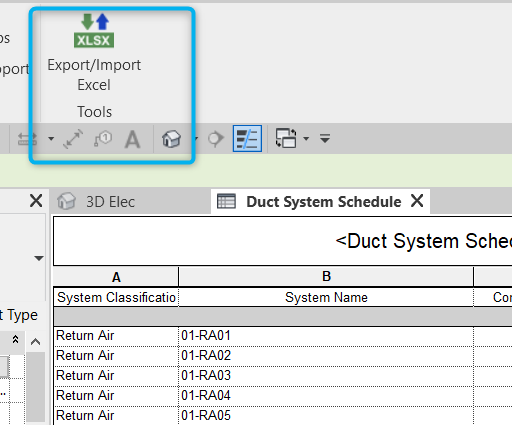Open New Opportunities with Innovative Revit Plugins
Wiki Article
Damaging Obstacles: Excel Importation Techniques for Advanced Revit Users
Explore various information importation methods and master Excel assimilation to improve your Revit modeling capabilities. With our ideas and tricks, you can get over importation difficulties and come to be a true specialist in using Excel for your Revit tasks.Advanced Revit Users: Leveraging Excel for Importation
You can conveniently leverage Excel for importation as an innovative Revit user. Excel is an effective tool that can considerably enhance your operations and performance in Revit. With its ability to take care of large amounts of information and perform complicated computations, Excel can be a valuable possession in handling and organizing your job info.One means to leverage Excel for importation is by utilizing the "Web link Excel" feature in Revit. This function permits you to connect an Excel spreadsheet directly into your Revit task, enabling you to update and integrate information in between both programs. When dealing with schedules or tracking modifications in your job., this can be specifically beneficial.
An additional means to make use of Excel is by utilizing the "Import/Export" feature in Revit. This feature allows you to import and export data between Revit and Excel, giving you the flexibility to deal with information in both programs. You can import data from Excel into Revit to create elements such as wall surfaces, areas, or doors, and you can likewise export data from Revit to Excel for additional evaluation or reporting.

Exploring Data Importation Techniques in Revit Making Use Of Excel
Discovering how to import data from Excel into Revit offers efficient methods for integrating information. When you import data from Excel, you can perfectly transfer data such as room schedules, material checklists, and tools information right into your Revit task. This procedure enables you to save time and effort by preventing manual information access.To import information from Excel right into Revit, you can utilize the "Import/Export" feature. This function enables you to map the Excel data areas to the equivalent Revit specifications, guaranteeing that the information is correctly appointed within the version. By choosing the proper import options, you can regulate exactly how the data is imported and how it communicates with your project.
An additional approach for importing data from Excel into Revit is by using Dynamo. Eager beaver is a visual programming device that integrates with Revit and allows you to automate workflows and tasks. With Eager beaver, you can produce custom manuscripts that import data from Excel and manipulate it within your Revit job. This method provides also much more flexibility and modification choices.
Understanding Excel Assimilation for Advanced Revit Modeling
Grasping Excel integration for sophisticated Revit modeling involves using efficient techniques to seamlessly transfer data and automate tasks within your task. By utilizing the power of Excel, you can boost your Revit modeling workflow and save beneficial time. One essential strategy is importing data from Excel spread sheets straight into your Revit design. This allows you to inhabit parameters, such as space names or product amounts, with ease. With a couple of easy steps, you can map the Excel columns to the corresponding Revit parameters and import the data properly.Another beneficial method is exporting information from Revit to Excel. This allows you to extract information from your model, such as timetables or material amounts, and analyze it in Excel using formulas, graphes, or various other powerful tools. By leveraging the capacities of Excel, you can carry out complex estimations, create personalized records, and gain valuable understandings right into your job.
Along with information transfer, Excel assimilation can automate recurring tasks in Revit. By developing macros or scripts in Excel, you can automate procedures like creating sights, creating sheets, index or applying conventional households - revit plugins. This not just saves time but also makes sure consistency across your task
To understand Excel assimilation in Revit, it is crucial to understand the information structure and how Revit communicates with Excel. By acquainting on your own with the offered devices and techniques, you can unlock the full potential of Excel assimilation and take your Revit modeling to the following level.
Conquering Importation Difficulties: Excel Techniques for Revit Experts
When getting rid of importation difficulties, it's important to be accustomed to effective Excel techniques that can profit experts in Revit. As a sophisticated Revit user, you understand the relevance of flawlessly importing data from Excel right into your tasks. You might encounter different obstacles along the way. By using effective Excel methods, you can conquer these challenges and enhance your productivity.
An additional useful method is utilizing the "Transpose" feature in Excel. This enables you to convert information from rows to columns or the other way around. When importing information right into Revit, this can be specifically practical when you have information in a vertical style in Excel, but you need it to be in a horizontal format in Revit.
Moreover, using Excel solutions such as VLOOKUP and INDEX-MATCH can greatly help in mapping information from Excel to Revit. These solutions permit you to look for particular worths in Excel and fetch matching data from another column. When importing large datasets into Revit., this can conserve you time and effort.
Excel Data Importation Tips and Techniques for Advanced Revit Users
By familiarizing yourself with efficient Excel methods and ideas, you can enhance your information importation process as an innovative individual of Revit. Additionally, using Excel's "Paste Unique" feature permits you to paste information from Excel into Revit while keeping format, such as cell color or font style. One more helpful method is to make use of Excel's "Locate and Replace" feature to rapidly make adjustments to your information before importing it into Revit.
Conclusion
You have now discovered beneficial methods for importing data from Excel into Revit as a sophisticated user. Go in advance, damage those obstacles and succeed in your Revit jobs!
When importing information right into Revit, this can be particularly useful when you have information in an upright layout in Excel, however you need it to be in a straight style in Revit.
Moreover, making find here use of Excel formulas such as VLOOKUP and INDEX-MATCH can considerably aid in mapping information from Excel to Revit. In addition, utilizing Excel's "Paste Special" feature permits you to paste data from Excel into Revit while keeping format, such as cell shade or font design.
Report this wiki page